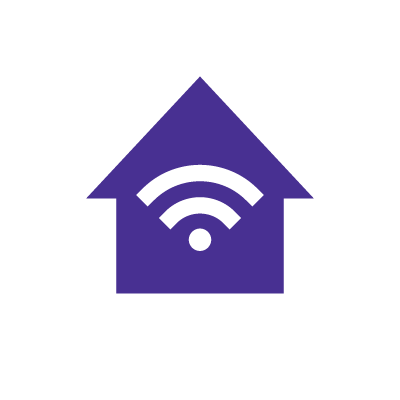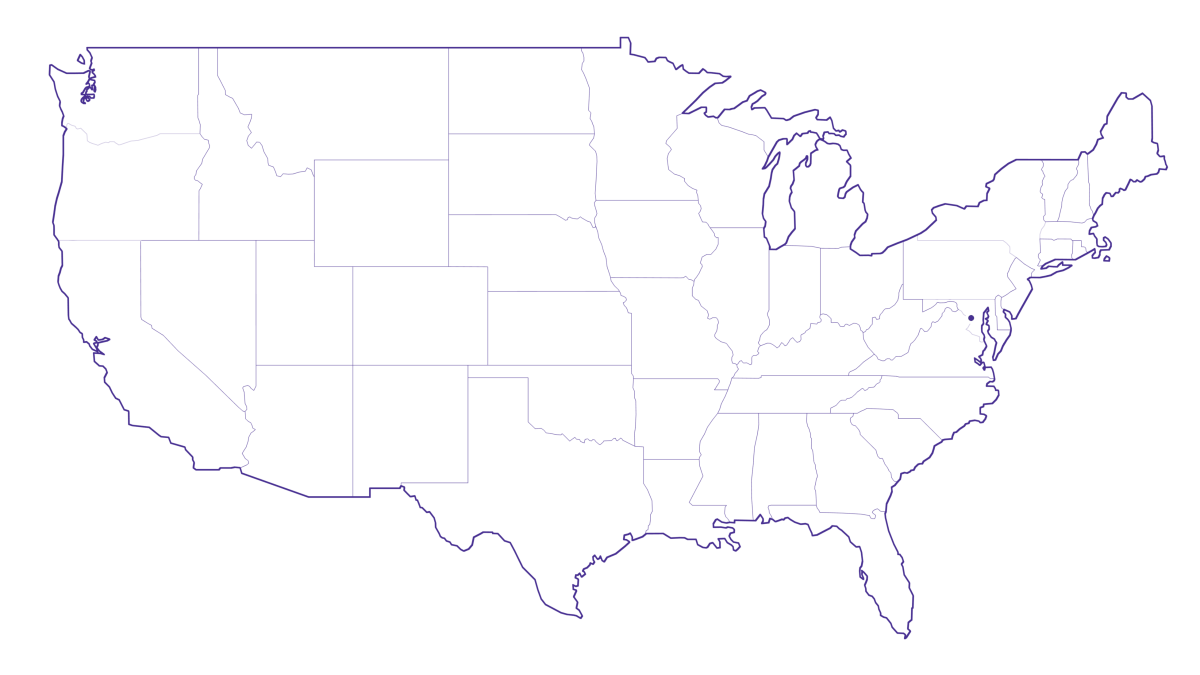Mesh WiFi vs Access Points: What's The Difference?

If you have explored wireless networking solutions for your home, you’ve likely found there are choices beyond a standard router and modem to optimize your WiFi network. Mesh networks, wireless access points and WiFi extenders all provide wireless connectivity; however, the right solution depends on your unique needs and requirements.
Access points, for example, extend the reach of an existing network, offering enhanced coverage and supporting more connected devices. On the other hand, mesh WiFi or mesh networks eliminate dead zones and create a single comprehensive whole home WiFi solution for streaming, gaming or working from home.
In this article, we’ll compare mesh WiFi and access points so you can make the right decision for your household’s specific networking needs.
WiFi that just works!
WiFi plans for any home
Tiny, large or somewhere in between; find WiFi coverage to fit any space. Blanket your entire home with a fast and ultra‑reliable connection.

What is a WiFi access point?
A WiFi access point is a device that creates a wireless local area network within a fixed location and extends the reach of an existing wired network.
Wireless access points connect to routers, switches or hubs by Ethernet cables and project WiFi signals across a specific area. Wireless devices nearby can connect to the network without needing a direct wired connection.
Access points are used in homes, businesses and public places to provide network access to a large number of users and devices over a wide area. It’s important to note that access points simply replicate your router’s internet speed; if you route a network through an access point that has slow speed or poor connection, your network range will be expanded, but the connection may be weak.
What are access points good for?
WiFi access points provide many benefits for users, such as extending coverage, supporting more devices and improving connectivity. Let’s review some of the benefits below.
-
- Increased coverage: Access points extend WiFi coverage in larger areas or to zones the main router can’t reach, like different floors or outdoors.
- Extended device support: Access points support the latest WiFi standards and tech, offering faster speeds to many connected devices and distributing the network load.
- Improved connectivity: Wireless access points spread WiFi across a broader area, reducing the impact of dead zones.
- Segmented networks: Users can leverage separate networks for guests, enhancing security for your own network.
Pros and cons of WiFi access points
Many benefits of the best wireless access points include extended coverage, improved connectivity and segmented networks, with more security options for an advanced user.
However, WiFi access points also have a few disadvantages when it comes to their cost, setup, management, maintenance and physical requirements.
-
- Cost: The cost of implementing WiFi access points includes not only the device itself but also installation and potential wiring or configuration costs.
- Setup: Access points can require complex configuration, especially if they require managing the same network across multiple devices to ensure networks do not interfere.
- Maintenance: Wireless access points need to be regularly maintained and monitored to ensure performance.
- Interference: If not properly configured, multiple access points can interfere with each other, leading to degraded performance.
Proper planning, installation and maintenance are crucial to leverage a WiFi access point.

Mesh WiFi with eero Secure
Enhanced Whole Home WiFi uses multiple routers (or eeros®) to boost range, speed, and stability, while eero Secure, included at no extra cost, offers parental controls, ad blocking, and internet backup for constant connectivity.
What is mesh WiFi?
Mesh WiFi systems evolved from military communications technology developed in the 1980s, becoming prominent in consumer markets by the 2000s to meet the need for reliable and extensive home WiFi coverage.
In the 2010s, brands like eero championed the simplification of setup and improvement of mesh WiFi connectivity across large areas such as offices and large homes.
Since then, the incorporation of technologies like WiFi 6e has further enhanced mesh WiFi’s ability to support homes with many connected devices and advanced smart tech.
How does mesh WiFi work?
Mesh WiFi aims to eliminate dead zones and ensure consistent internet quality across a range of different internet speeds – no matter your space. Unlike traditional routers, which rely on a single point of broadcast, mesh networks use multiple access points in the form of physical nodes. Each node in the mesh network communicates with the main router and with other nodes.
When the configuration is optimized, the mesh WiFi nodes create a grid-like infrastructure in which data is routed through the fastest and most efficient paths.
Pros and cons of mesh WiFi
Many benefits of mesh WiFi include node-rich networks, self-configuring maintenance, easy management and seamless connectivity throughout the home.
-
- Multiple nodes: A mesh WiFi system can include several nodes. One acts as the primary router, connected directly to your modem. Additional nodes work with the primary router, extending WiFi coverage strategically throughout the home.
- Self-configuring: After set up, nodes automatically communicate with each other to optimize the data routing paths, allowing the mesh technology to flex with the number of devices connected and their needs as they adapt in real-time to changes in the environment, such as interference or device movement.
- Roaming-ready: Devices automatically connect to the strongest signal within the mesh network. As you move around, your devices switch seamlessly between nodes without dropping the connection or reconnecting to different networks.
- Easy-to-manage: Most mesh WiFi systems are managed via smartphone, which allows users to control the performance of their wireless network and connected devices, prioritize device traffic, adjust security settings and receive firmware updates.
While mesh WiFi offers many advantages, specific users may find that they do not need the robust features that a mesh network provides. In a small space where WiFi can reach all areas, for example, usually a traditional router will be enough.

eero Plus
eero Plus protects your family online with a password manager to safely create, store and share passwords, virus and malware protection and a VPN that lets you browse the web safely and securely.
Mesh WiFi vs access points: Comparative analysis
While mesh WiFi and access points both serve the purpose of providing wireless internet access, they differ significantly in design, coverage, performance and management. Let’s compare the two below.
Coverage
-
- Access points: While individual access points may provide stronger signals than a single mesh node, coverage is limited to the range of that unit. In order to cover a larger area, you would need to use multiple access points and wire them back to the main router.
- Mesh WiFi: Coverage is extensive, as nodes can be added to eliminate dead zones and ensure consistent signal strength across larger and multi-story buildings.
Performance
-
- Access points: Access points tend to offer more stable and faster speeds because each device is directly connected to the main network. However, users farther away from the access point or behind obstructions experience weaker signals and lower speeds.
- Mesh WiFi: Designed to maintain stronger and more consistent performance throughout the covered area. Nodes communicate with each other to ensure devices are always connected to the strongest signal available.
Setup
-
- Access points: Setup is generally more complex. It may involve technical knowledge, requiring connection of each access point to the main router via Ethernet, running cables through walls or ceilings and configuring network settings manually.
- Mesh WiFi: Mesh networks offer user-friendly setup. Most consumer-grade mesh systems, such as eero, come with a mobile app that guides you through the installation.
Price
-
- Access points: Modern consumer devices often used in smaller spaces or homes, range in price from $50 to $150, supporting basic features and a moderate number of concurrent users.
- Mesh WiFi: For home users, mesh nodes can range from approximately $100 to $250 each. They provide great coverage and speed, suitable for homes or apartments, as well as features like parental controls and security.
Management and maintenance
-
- Access points: Access points often require more hands-on management, typically through network management software. While more complex, you can expect more customization and real-time monitoring.
- Mesh WiFi: Many mesh systems offer easy management through mobile apps, and auto-scheduling and execution of tasks such as channel switching, network optimization and firmware updates.
Switch & save
Astound is the #1 cable ISP
Stream live content, work, surf, game and connect to multiple devices with speeds up to 1500* Mbps through our ultra‑reliable fiber‑powered network.*

What option is best for my home?
Choosing between the best mesh WiFi system and access points for your home depends on several factors, including the size of your home, the layout, the number of devices you’ll connect and your specific needs for features and performance.
Mesh networks for the home
-
- Home size and layout: Mesh networks are great for larger homes or homes with complex layouts that might create signal dead zones. Connectivity between nodes ensures coverage throughout the house – without signal drops.
- Ease of use: If you prefer a system that’s easy to set up and manage without needing technical expertise, mesh networks are the better choice.
- Expandability: If you anticipate needing to extend your network coverage—such as into a basement or a backyard—adding additional nodes to a mesh network is simple.
Wireless access points for the home
-
- High-density usage: As access points connect directly to your main router via Ethernet, they generally provide stability.
- Control and customization: If you desire more control over your network settings, such as QoS, security or network settings, access points may be the better option.
- Aesthetics: Access points are large and must be installed to connect near your modem. Mesh networks, however, are less obtrusive than access points, which may be a consideration if you prefer a cleaner, streamlined look.
Bottomline: Mesh WiFi vs access points
When deciding between mesh WiFi or wireless access points, you need to compare your needs with the specific functions of each technology. You should consider the short-term and long-term benefits of both.
Mesh networks are designed to be consumer-friendly and easily adjustable for covering any area of your home. If you decide that the benefits of an access point system—such as higher capacity and performance—outweigh the more complex setup and management, it might be worth considering if you have the expertise or resources to manage it effectively.
Ultimately, the right choice will align with your specific needs, household setup and how you use your internet connectivity at home.
Build your plan
Your perfect plan is just a click away
Get the speeds, WiFi, mobile and TV plans you need all at an affordable price. Bundle your services with Astound and see how much you can save.

Frequently asked questions
Do you lose speed with mesh WiFi?
Yes, there can be some reduction in speed with mesh WiFi compared to using a single router, particularly as the distance increases from the primary router to the satellite nodes.
What must be avoided in a mesh network?
Avoid poor placement of nodes, make sure to use a balanced number of nodes, keep your software updated, use compatible technology, secure your network and consider using a wired backhaul to optimize performance.
Is it bad to have too many WiFi access points?
Yes, having too many WiFi access points can be problematic. It can lead to signal interference, network congestion and inefficient use of bandwidth, potentially slowing down the overall network performance.
Why would I need a wireless access point?
A wireless access point is useful for extending WiFi coverage, supporting more devices, enhancing network performance, segmenting the network for security and providing outdoor or high-density area coverage.
Can I connect an access point directly to a modem?
Yes, you can connect a wireless access point directly to a modem if the modem has a built-in router with an Ethernet port. If the modem does not have router functionality, you would need a separate router between the modem and the access point to handle these tasks.
*Internet speeds may vary & are not guaranteed. Certain equipment may be required to reach advertised speeds. DOCSIS 3.1 modem with 2.5GE physical LAN port is required for 1 Gigabit speeds and higher. See astound.com/yourspeed for why speeds may vary. To view Astound’s FCC Network Management Disclosure see astound.com/policies-disclaimers. Limited time offer, subject to change without notice. Advertised promotional price valid for duration of the stated promotional period from time of service activation. Regular rates apply after promotional period ends. Equipment not included and is extra. Modem required for Internet service. Enhanced Wi-Fi or Whole Home Wi-Fi (eero) not included and is add’l. Offer includes a monthly discount for enrollment in both automatic payments (autopay) & paperless billing (e-bill). Discount of $10 applies with automated bank account deduction or a discount of $5 applies with automated credit/debit card payment. Valid email address required. Must complete enrollment in autopay and e-bill within 30-days of placing the order. Without enrollment, the discount does not apply. Discount appears on bill within 3 bill cycles after enrolling. If either autopay or e-bill is canceled, services are changed, or the account is not in good standing, then the monthly discount will be discontinued. Offer valid only for new residential Astound customers or previous customers with an account in good standing who have not had Astound service within the last 60 days. Any add’l services, equipment, premium channels & other tiers of service are subject to an add’l charge & regular increases. A one-time activation fee of $14.99 (in addition to any installation fees) will be charged & is subject to change. Add’l fees apply for taxes & surcharges, and are subject to change. WA RESIDENTS: unless otherwise specified, price does not include a 2% Regulatory Administration Fee. For details about taxes, fees & surcharges visit astound.com/fees. No early termination fees apply in the event service is terminated in advance of the promotional end date. Customer is responsible for any accrued service charges in the event service is canceled. Subject to credit check. Not all services & speeds are available in all areas. A multi-product discount may be available to qualifying addresses with a subscription to mobile, TV, and 600 Mbps Internet or higher. Discounts will be reflected in your order cart at time of purchase, if available. Other restrictions may apply. All services are governed by the Astound Customer Terms & Conditions that can be found at astound.com/policies-disclaimers. © 2025 Radiate HoldCo, LLC d/b/a Astound Broadband. All rights reserved.
While we have made every attempt to ensure that the information contained in this site has been obtained from reliable sources, Astound is not responsible for any errors or omissions, or for the results obtained from the use of this information. All information in this site is provided “as is”, with no guarantee of completeness, accuracy, timeliness and without warranty of any kind, express or implied, including, but not limited to warranties of performance, merchantability and fitness for a particular purpose. Certain links in this site connect to other websites maintained by third parties over whom Astound has no control. Astound makes no representations as to the accuracy or any other aspect of information contained in other websites.
eero Plus is available for an additional $9.99/month and requires subscription to whole home WiFi powered by eero.

















